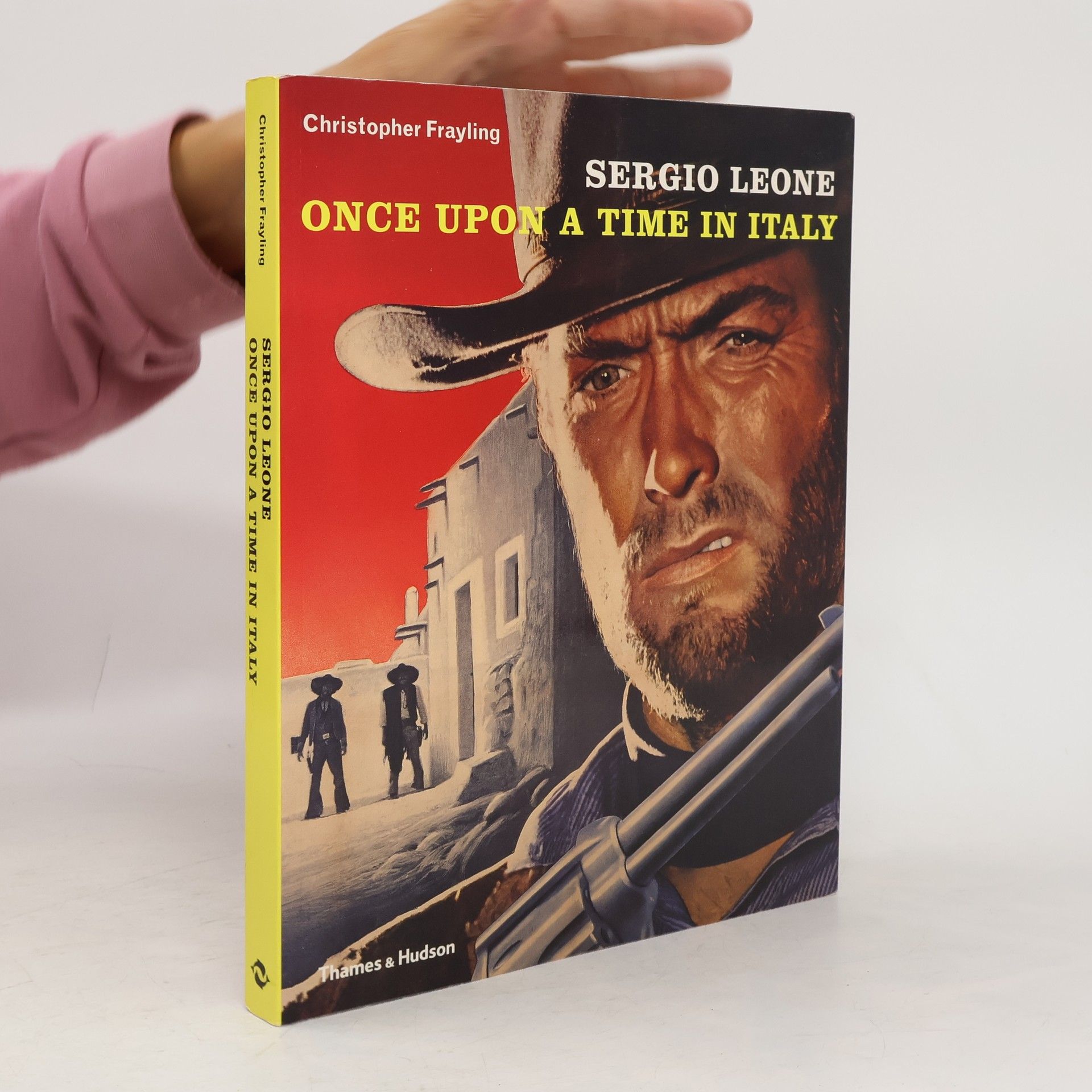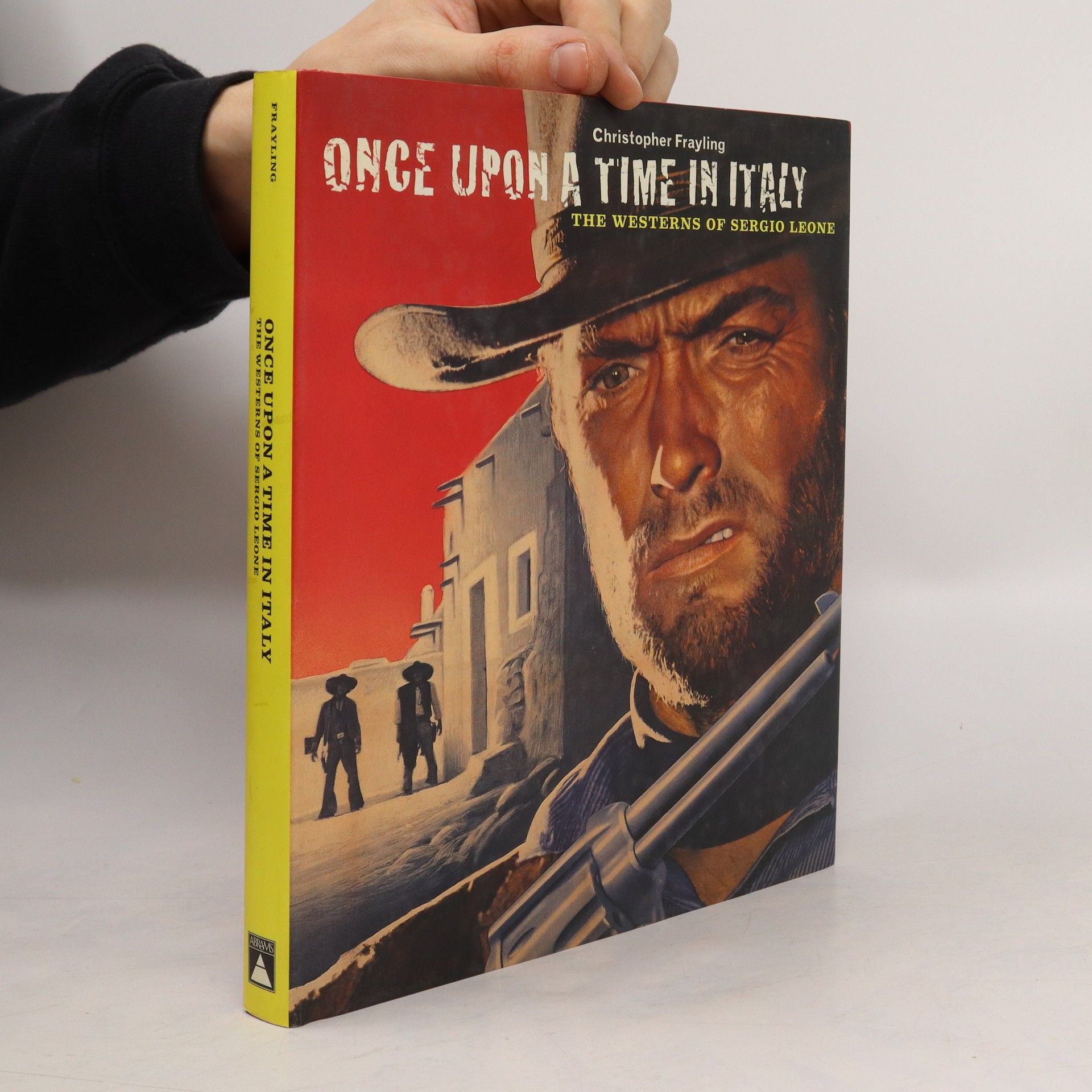Groundbreaking 'spaghetti westerns' such as the 'Dollars' trilogy (starring Clint Eastwood as 'The Man With No Name'), and the magisterial Once Upon A Time In The West, made Sergio Leone one of the most popular directors in world cinema. Christopher Frayling's biography of Sergio Leone lovingly explores his body of work, and casts light upon the previously little-known details of his life. Sergio Leone was born into movies, his father a popular director of the silent era. Obsessed by the illusory worlds of cinema and theatre, captivated by the myths of the American West, young Sergio embarked on a fabulous career of his own. He made an icon out of the initially reluctant Clint Eastwood, and dallied with the Hollywood studio system, but always stuck to his guns: the gangster epic Once Upon A Time In America consumed 15 years of his life. But Leone's passion made for extraordinary cinema: a widely-adored collection of films, about which Christopher Frayling provides an unprecedented wealth of extensively-researched analysis and anecdotage. In this revealing biography Christopher Frayling, the widely-acclaimed author of The Yellow Peril explores the life of Sergio Leone, the world-renowned director of the Good, the Bad and the Ugly, A Fist full of Dollars, Once Upon A Time in the West and Once Upon A Time in America.
Christopher Frayling Livres






Cinema: The Whole Story
- 576pages
- 21 heures de lecture
Cinema: The Whole Story takes a close look at the key time periods, genres and key works in world cinema. It places the burgeoning world of cinema in the context of social and cultural developments that have taken place since its beginnings. Organized chronologically, the book traces the evolution of cinematic development, from the earliest days of film projection to the multiscreen cinemas and super-technology of today. Illustrated, in-depth text charts every genre of cinema, from the first silent films to epic blockbusters, CGI graphics and groundbreaking effects of the 21st century. Cinema: The Whole Story is an indispensable book for all those who love watching and reading about films and who want to understand more about the world of cinema.
The Art Pack
A Unique, Three-dimensional Tour Through the Creation of Art
Looking at Western art history from medieval times to the present day, this boxed set shows readers everything they need to know about great art and artists. Packed with colour reproductions, it contains many pull-out and pop-up elements which allow the reader to discover aspects in the history of art. The elements include a medieval masterpiece to take apart and reconstruct so you can see if you can improve the composition, a pull-out camera obscura to show how artists used it, a colour wheel to understand the full significance of the spectrum, a pop-up cubist painting and a mobile to make yourself. On a tape enclosed in the pack, the authors describe each painting in their top 20, explaining its significance, with a booklet to tell you about every word, name, concept, group, era and aspect of art.
Mary Shelley's creation, Frankenstein, who emerged from a dream by a young woman who had just lost her first child, has transformed itself into a warning about the dangers of tampering with nature. The vampire started life as a sexual fantasy, and Bram Stoker's tale became a metaphor for dominance and dependence in sexual relationships. "Dr Jekyll and Mr Hyde", perhaps the most psychological of all horror stories, examines the beast in man and the dark side of human nature. And "The Hound of the Baskervilles" is a tale of conflict between rationalism and folklore, and the skills of Sherlock Holmes. Exploring the world of the macabre and gothic in Victorian fantasy, this book examines why and how the great horror myths originated, and their popular appeal in the 19th century. It also investigates the way in which they have taken on new meanings and dimensions in our culture.
The Innocents
- 119pages
- 5 heures de lecture
Sir Christopher Frayling explores the journey from Henry James's original novella, The Turn of the Screw, via critical debates and the stage version of The Innocents, to the screenplay by Archibald, Capote and Mortimer. Making full use of the unpublished Jack Clayton archive, the book also includes interviews with Deborah Kerr and Freddie Francis.
This delightful compendium focuses on one of the best-loved poems in the English language, but in the process it takes the reader on an engaging romp through the literary, intellectual, and cultural world of the eighteenth century. It brings alive a host of engaging characters: Horace Walpole himself (one of the great letter writers of all time, wit, raconteur; the curmudgeonly Dr. Johnson (who nevertheless had a very fine cat indeed ) and his sometimes recalcitrant biographer James Boswell; and a cast of handsome cats, including Selima and Zama.In February 1747, Selima the tabby fell into a Chinese blue and white porcelain tub in Walpole s house in London s Mayfair and never returned to dry land. The poem by Thomas Gray, Ode on the Death of a Favourite Cat, Drowned in a Tub of Gold-fishes, was written as her mock epitaph. Here is the true history of the event, and a look at the sparkling social and cultural life of the period. It is beautifully illustrated with Richard Bentley s original series of designs for the poem, William Blake s wonderful watercolors of some fifty years later, and the unpublished color illustrations produced in the 1940s by the noted children s book illustrator Kathleen Hale, of Orlando the Marmalade Cat fame.
Over 400 Spaghetti Westerns were produced during the 1960s and 1970s peak period. This book deals with several interesting examples, not to mention French, German, and Russian Westerns along the way.
A comprehensive anthology of vampires in literature, from Dracula to Twilight. Christopher Frayling has spent 50 years exploring the history of one of the most enduring figures in the history of mass culture - the vampire. Vampyres is a comprehensive illustrated history of vampires in literature, from the folklore of Eastern Europe to the Romantics and beyond. Frayling recounts the most significant moments in Gothic history, while extracts from a huge range of sources - including Bram Stoker's detailed research notes for Dracula, penny-dreadfuls and Angela Carter's The Lady of the House of Love, are contextualized and analysed. This revised and expanded edition brings Vampyres up to date with 21st-century vampire literature, including new text extracts, commentary and a revised introduction. Christopher Frayling also explores the development of the vampire in the visual arts, with illustrations ranging from 17th-century prints to 21st-century film stills, demonstrating the enduring appeal of the vampire from popular press to fine art and, finally, to film.
In the mid-1960s, an unknown Italian film director, Sergio Leone, made A Fistful of Dollars, the first in a trilogy of films that came to define the spaghetti western. The films that complete the trilogy, For a Few Dollars More and The Good, the Bad and the Ugly, are, like the first film, violent, cynical and visually stunning, and together they form the backbone of an important film genre that has influenced many contemporary filmmakers. This book, newly available in paperback, is an authoritative, in-depth study of Leone and the ItalianWestern by film expert and cultural historian Sir Christopher Frayling. Featuring analyses of and interviews with all the key players, including Leone himself, it forms a wonderful tribute to one of the master filmmakers of the 20th century.
An illustrated exploration of the mid-twentieth-century filmmaker's "spaghetti westerns" considers his role in defining the genre, his visual style and elliptical storytelling methods, and his creation of such works as A Fistful of Dollars and Once Upon a Time in the West. 12,500 first printing.

